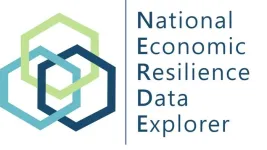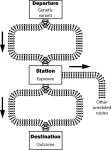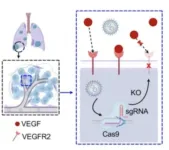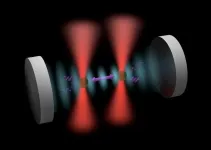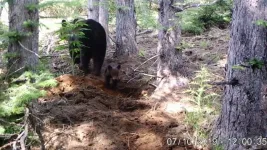(Press-News.org) Highlights:
A chemical called Bisphenol A (BPA) is used to make many durable plastics and resins.
Previous studies suggest high BPA exposure can increase health risks and change gut microbiome structure.
Researchers investigated links between BPA exposure, obesity and the gut microbiome.
The study found that normal-weight children had more unique bacteria taxa, which may help degrade BPA.
The findings may help point to microbial strains that neutralize BPA in the gut.
Washington, D.C. — March 1, 2024 — A synthetic chemical called Bisphenol A, or BPA, is widely used in the production of durable plastic products including eyewear, water bottles and epoxy resins. But it’s also an endocrine disruptor, which means that it can interfere with normal hormone functions in the body. Studies suggest that high levels of exposure may be detrimental to human health in a variety of ways; it may also alter the gut microbiome.
But the connections aren’t clear. Researchers in Spain recently studied a group of over 100 children to identify microbes that play a role in BPA exposure and degradation, with the larger goal of understanding the complicated relationship between that process and childhood obesity. In their study, published this week in mSystems, the researchers found more unique bacteria taxa in children of normal weight than in overweight or obese children.
The findings suggest that BPA exposure could promote different microbial communities in normal weight children than those in children with obesity or who are overweight.
“We found that the gut microbial community responds differently to BPA exposure depending on the BMI (body-mass index) of the individual,” said microbiologist Margarita Aguilera, Ph.D., at the University of Granada in Spain. Aguilera is a senior author on the study. Those connections, she said, “underscore the intricate interplay between gut microbiota and potential human pathophysiology resulting from cumulative BPA exposure.”
Previous studies have investigated symptoms and effects associated with BPA exposure. Others have used mouse models and 16S rRNA gene sequencing, which can reveal microbes in complex mixtures of materials, like those from the gut or water. For the new study, the researchers, including Ana López-Moreno, Ph.D., who led the experimental work as part of her doctoral thesis, instead combined analyses of cultured samples with amplicon sequencing—an approach that, to their knowledge, hasn’t been used before.
The results came from a study of 106 children in Spain, roughly half boys and half girls, all between the ages of 5 and 10. They had participated in the OBEMIRISK project, an effort to understand the interplay between BPA and the gut microbiome sponsored by the European Food Safety Authority. Sixty of the children were normal weight; the rest were either overweight or obese. Fecal samples from the children were exposed to several levels of BPA and allowed to incubate for 3 days. Then, the researchers used 16s rRNA sequencing and amplicon sequencing, ultimately identifying 333 BPA-resistant bacterial species.
Notably, species of Clostridium and Romboutsia found in the BPA-cultured samples promoted the richness of microbiota communities. Generally, Aguilera’s team noted, normal-weight children hosted a more diverse, enriched and structured network of bacteria than those found in the groups of overweight and obese children. Those results, she said, suggest that the gut microbiota in normal-weight children may be more resilient when exposed to xenobiotic substances like BPA.
Knowing which microbes participate in the complex network connecting BPA, obesity and the gut microbiome, Aguilera said, could point to future interventions and policy changes that may reduce the risk of childhood obesity worldwide. In future work, she said the researchers plan to similarly investigate how exposure to other synthetic chemicals, including parabens and phthalates, may influence the composition of the gut microbiome. Her group’s overarching goal, however, is to elucidate the mechanisms behind an invisible but widespread threat.
“We want to raise awareness about the health risks associated with microplastics that enter our bodies, and those that circulate in the environment,” Aguilera said. “It’s crucial for individuals to be mindful of these concerns.”
###
The American Society for Microbiology is one of the largest professional societies dedicated to the life sciences and is composed of 36,000 scientists and health practitioners. ASM's mission is to promote and advance the microbial sciences.
ASM advances the microbial sciences through conferences, publications, certifications, educational opportunities and advocacy efforts. It enhances laboratory capacity around the globe through training and resources. It provides a network for scientists in academia, industry and clinical settings. Additionally, ASM promotes a deeper understanding of the microbial sciences to diverse audiences.
END
Community leaders and administrators now have a more powerful tool for understanding their communities’ economic strengths and vulnerabilities, thanks to the newly enhanced and cleverly monikered National Economic Resilience Data Explorer (NERDE). The online data portal’s enhanced second edition makes it easier for users to create economic development plans, improve resilience and apply for economic assistance and grants.
NERDE first launched as a partnership between the U.S. Department of Energy’s (DOE) Argonne National ...
The most recent COVID-19 booster shot reduces adults’ risk of moderate or severe COVID by more than half, according to a new nationwide data study from September 2023 through January 2024, a period of JN.1 variant dominance.
The new study is one of the first to evaluate protection provided by the updated shot against COVID-19-associated emergency department and urgent care visits (markers for moderate disease) and against hospitalizations (a marker for severe disease), in individuals 18 and older, due to JN.1, the most ...
Mendelian randomization, a powerful tool in medical research, helps us understand whether certain factors truly cause disease. This technique uses genetic variations as "natural experiments" to reveal cause-and-effect relationships. However, choosing the proper genetic variations is crucial for accurate results.
Think of a train network where the genetic variation is the starting point, the exposure is a station, and the disease is the destination. The train must pass through the exposure station en route to the disease. This represents the critical assumption of Mendelian randomization: ...
Penn Engineers have developed a new means of targeting the lungs with lipid nanoparticles (LNPs), the miniscule capsules used by the Moderna and Pfizer-BioNTech COVID-19 vaccines to deliver mRNA, opening the door to novel treatments for pulmonary diseases like cystic fibrosis.
In a paper in Nature Communications, Michael J. Mitchell, Associate Professor in the Department of Bioengineering, demonstrates a new method for efficiently determining which LNPs are likely to bind to the lungs, rather than the liver. “The way the liver is designed,” says Mitchell, “LNPs tend to filter into hepatic cells, and struggle ...
The question of where the boundary between classical and quantum physics lies is one of the longest-standing pursuits of modern scientific research and in new research published today, scientists demonstrate a novel platform that could help us find an answer.
The laws of quantum physics govern the behaviour of particles at miniscule scales, leading to phenomena such as quantum entanglement, where the properties of entangled particles become inextricably linked in ways that cannot be explained by classical physics.
Research in quantum physics ...
New findings reveal that the body undergoes significant, systematic changes across multiple organs during prolonged periods of fasting. The results demonstrate evidence of health benefits beyond weight loss, but also show that any potentially health-altering changes appear to occur only after three days without food.
The study, published today in Nature Metabolism, advances our understanding of what’s happening across the body after prolonged periods without food.
By identifying the potential health benefits from fasting ...
The microbiome can identify those who benefit from combination immunotherapy across multiple different cancers, including rare gynaecological cancers, biliary tract cancers and melanoma.
Researchers from the Wellcome Sanger Institute, the Olivia Newton-John Cancer Research Institute in Australia, and collaborators, have identified specific strains of bacteria that are linked with a positive response to combination immunotherapy in the largest study of its kind.
The study, published today (1 March) in Nature Medicine, details a signature collection of microorganisms in an individual’s gut bacteria that may help identify those who would benefit from combination immunotherapy and ...
A study published today in Nature Nanotechnology shows that similarly charged particles can sometimes attract, rather than repel.
The team found that like-charged particles suspended in liquids can attract one another at long-range, depending on the solvent and the sign of the charge.
The study has immediate implications for processes that involve interactions in solution across various length-scales, including self-assembly, crystallisation, and phase separation.
‘Opposites charges attract; like charges repel’ is a fundamental principle of basic physics. But a new study from Oxford University, published today in Nature Nanotechnology, has demonstrated that similarly ...
In this study, we determined nine genomes of Japanese wolves and 11 genomes of modern Japanese dogs at high coverage and analyzed with one hundred dog and wolf genomes in the public database. The analyses showed that 1) the Japanese wolf was a unique subspecies of the gray wolf that is genetically distinct from both extant and ancient gray wolves known to date, 2) the Japanese wolf is most closely related to the monophyletic group of dogs. Furthermore, 3) Japanese wolf ancestry has introgressed into the ancestor of East Eurasian dogs at an early stage of the dog’s history ...
Brown bears foraging for food in the Shiretoko Peninsula of Hokkaido, Japan, have been disrupting tree growth in artificial conifer forests, according to a new study. Researchers compared soil and tree samples from human-forested plots with samples from natural forests. They found that the bears’ digging for cicada nymphs damaged tree roots and altered the nitrogen content of the soil, which in turn limited the diameter growth of trees. The phenomena of bears digging for cicadas, an unusual food source, appears to be restricted to human-planted conifer forest; diversely vegetated natural forest ...
